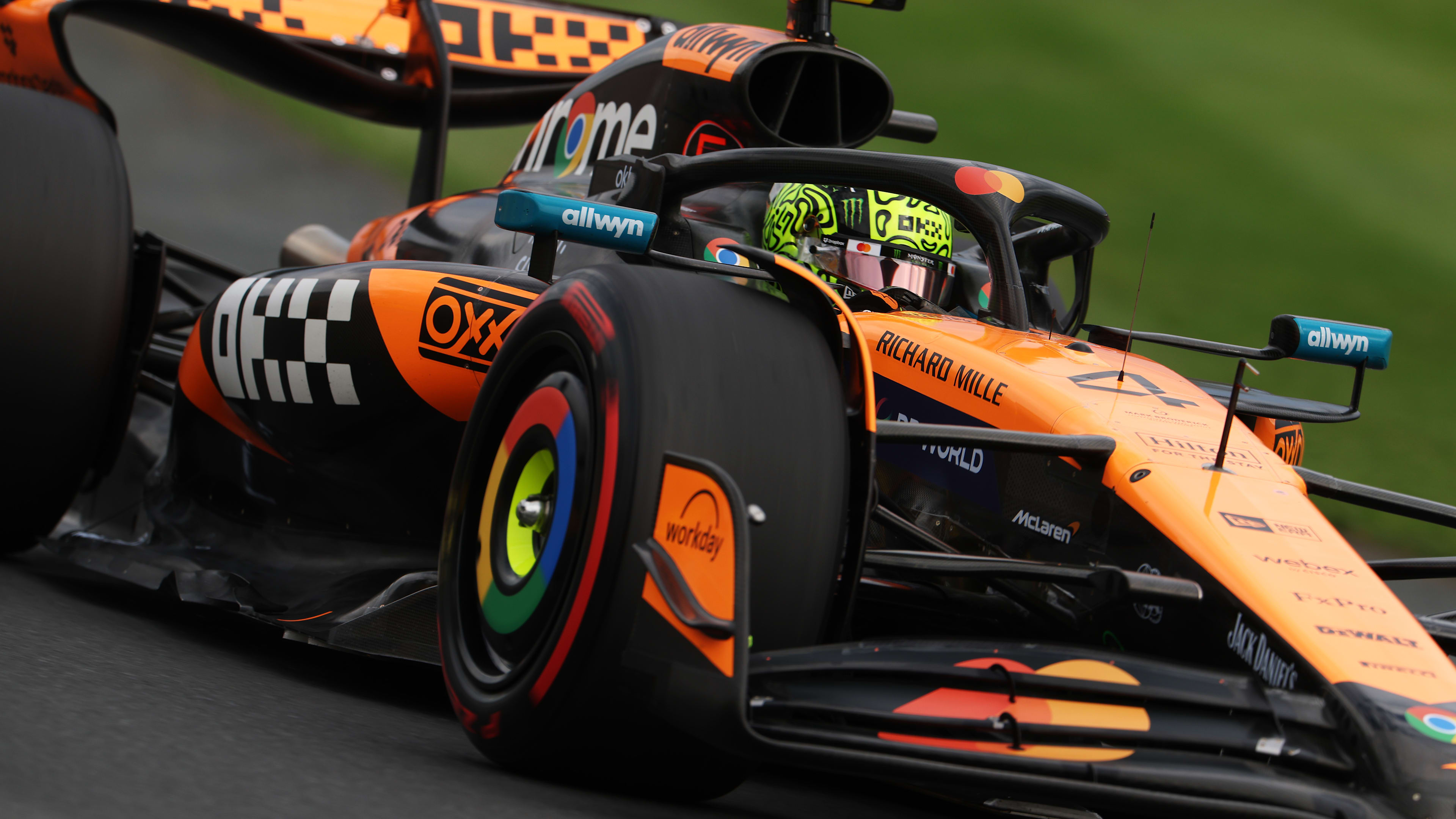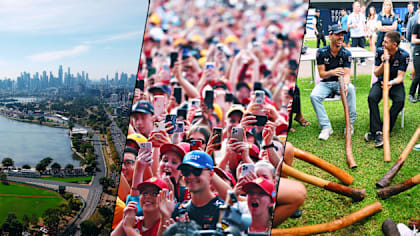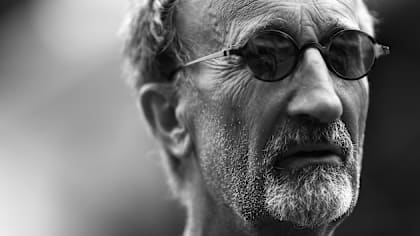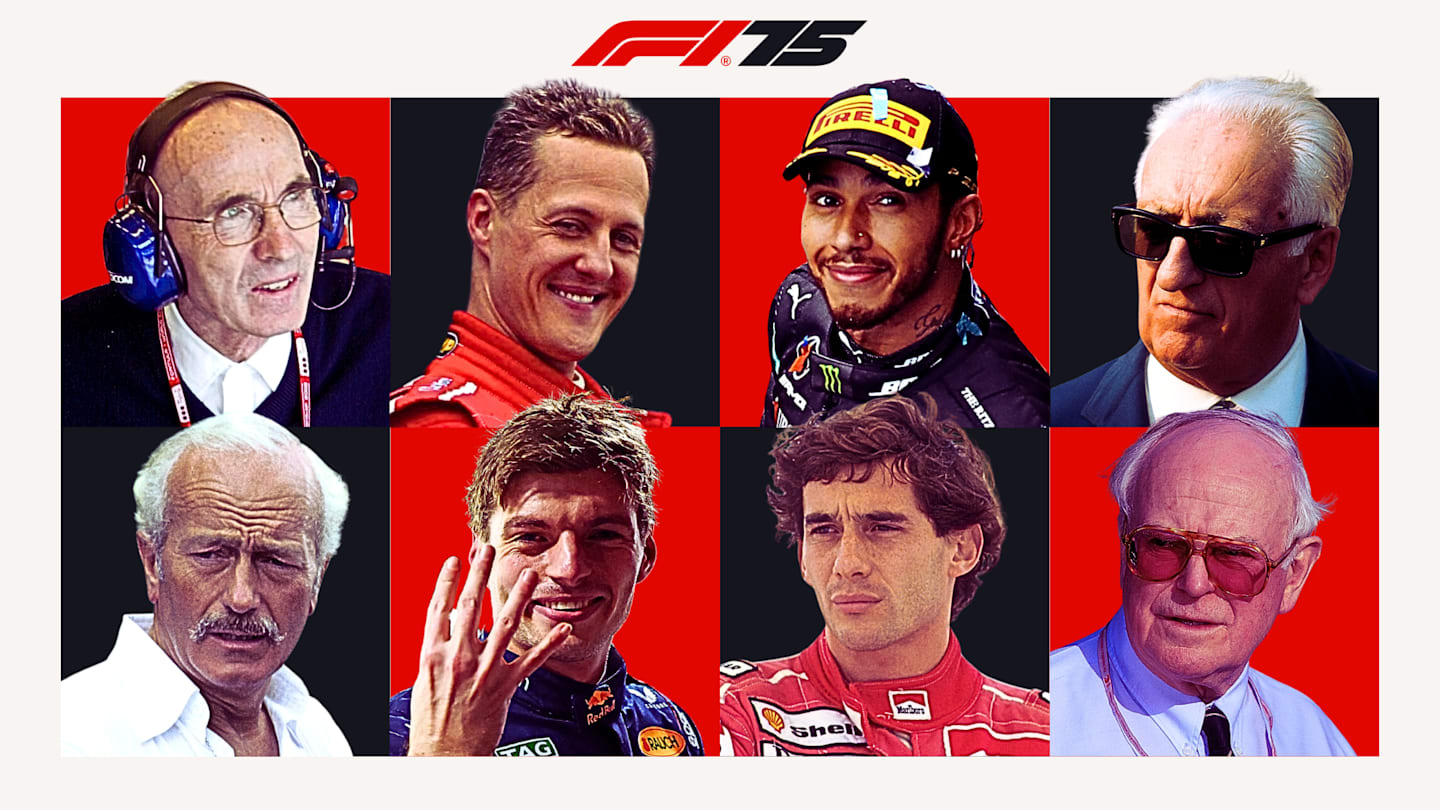
Feature
The 75 best drivers, cars, innovations, teams and key figures in F1 history
Share

Formula 1 has already kickstarted its 75th anniversary year in exciting style, with the F1 75 Live event at London’s The O2 launching the campaign while pre-season testing saw the 2025 cars hit the track in anger for the first time at the Bahrain International Circuit.
The 10 teams and 20 drivers lining up on the grid will be hoping to add their names to the illustrious list of success stories from the sport’s past, whether it be through developing a dominant car, fighting for the World Championship or creating a game-changing innovation.
In honour of this milestone season for F1, we’ve been taking a look back at 75 of the best cars, drivers, innovations, teams and key figures – presented in no particular order – from the championship’s 75 years so far…
READ MORE: 5 key questions that need answering after 2025 pre-season testing in Bahrain
The best… drivers
Michael Schumacher
Many years on from his time in the sport, Michael Schumacher remains towards the top of the list for various F1 records. After impressing on his brief debut for Jordan in 1991, Benetton were quick to secure Schumacher’s services, leading to the team and driver claiming back-to-back championships in 1994 and 1995.
Schumacher truly shone, though, during his subsequent stint with Ferrari, scoring five consecutive titles between 2000 and 2004. While a comeback with Mercedes from 2010 to 2012 did not prove as successful, the German had well and truly sealed his place in the history books with seven World Championships, 91 wins and 68 pole positions to his name.
Michael Schumacher's 91st win at the 2006 Chinese Grand Prix
Ayrton Senna
Across 10 years in Formula 1, Ayrton Senna achieved three Drivers’ Championships, 41 wins and 65 pole positions. And while his life was tragically cut short following a fatal accident during the 1994 San Marino Grand Prix, the Brazilian’s legacy very much lives on.
From his passionate reaction to winning for the first time in front of his home crowd, through to his infamous rivalry with Alain Prost and his off-track heroics in helping to save the life of fellow driver Erik Comas, Senna’s time in the sport left behind countless memories that have cemented him as one of the all-time greats.
Lewis Hamilton
Few drivers have come close to achieving the heights of success reached by Lewis Hamilton. After making his debut with McLaren in 2007, the Briton won his debut World Championship in only his sophomore season before again tasting title glory with Mercedes in 2014.
This marked the start of a stunning run for Hamilton and the Silver Arrows, with the partnership helping Hamilton to take the Drivers’ Championship in every subsequent year (barring 2016) through to 2020, the campaign in which the man from Stevenage equalled Michael Schumacher’s seven titles. Hamilton has more wins, pole positions, podiums and points than any other driver in history.
Max Verstappen
A more recent name slotting into the history books is Max Verstappen, now a four-time World Champion following his hard-fought title in 2024. The Dutchman arrived into the sport with Toro Rosso aged just 17 back in 2015, before a promotion to the main Red Bull outfit one year on saw him win on debut to become the sport’s youngest-ever winner at 18 years and 228 days old.
After a fierce title battle with Lewis Hamilton in 2021, Verstappen took his debut Drivers’ Championship and followed this up with three more in a row, including a record-breaking 2023 campaign that saw him win 19 out of 22 races. Along the way, Verstappen has earned 63 Grand Prix wins and 40 pole positions.
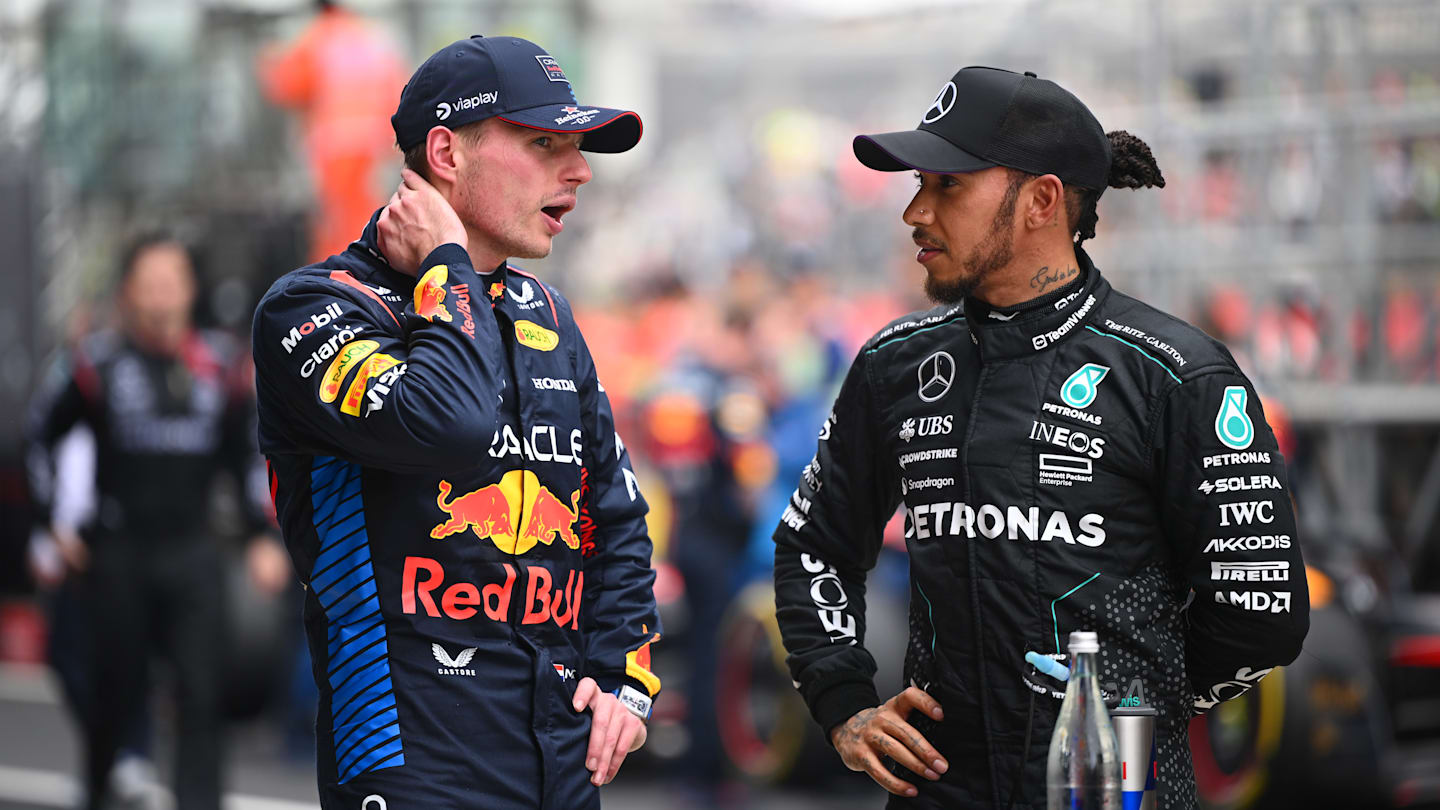
World Champions Verstappen and Hamilton have enjoyed their fair share of battles over the years
Alain Prost
Joining Verstappen in the four-time title-winner club is Alain Prost. The Frenchman – famously known as ‘The Professor’ owing to his analytic approach to racing – achieved 51 victories and 33 pole positions across his 13 seasons in Formula 1.
Like other names in this list, there were some controversies for Prost along the way – including his aforementioned rivalry with Ayrton Senna and a bitter firing from Ferrari in 1991 – but his place as one of the greats of the sport is without question, with many racers in the years since adopting a similarly cerebral driving style.
Juan Manuel Fangio
In any discussion of the greatest drivers in history, Juan Manuel Fangio is often touted as one of the very best. Making his debut during Formula 1’s first championship year in 1950, the Argentinian only had to wait until 1951 to clinch the title with Alfa Romeo.
Fangio was not afraid to switch teams in his pursuit of success and went on to claim a further four World Championships with Mercedes (1954 and 1955), Ferrari (1956) and Maserati (1957) before retiring in 1958. His record of five titles went unequalled for decades, while his win rate of 47% highlights his dominance during his years in the sport.
Jackie Stewart
Jackie Stewart’s racing record puts him easily amongst the greats, having scored three World Championships, 27 wins and 17 pole positions across his nine seasons in F1. This run also included a performance ranked by many as one of the best in the sport’s history when the Scot dominated in treacherous conditions at the 1968 German Grand Prix.
But what also marks Stewart out as an icon of Formula 1 is his off-track work, having acted as a key figure in developing safety standards – despite opposition at the time – during an era that witnessed frequent tragedies. This crusade resulted in improvements that still have an impact on the sport today.
Top 10: Moments of Jackie Stewart Brilliance
Sebastian Vettel
Several figures in this list have been fortunate to enjoy sustained periods of success in F1 – and Sebastian Vettel was amongst those to experience this, having earned four consecutive championships with Red Bull between 2010 and 2013.
A subsequent switch to Ferrari failed to deliver those same levels of glory – despite coming close to another title more than once – but Vettel also became a figurehead in terms of off-track matters during his latter years in the sport, the German having used his platform to support a range of environmental and social causes.
Niki Lauda
When it comes to F1 comeback stories, none are quite as remarkable as that of Niki Lauda, who famously returned to action just six weeks after a horrifying fiery crash at the Nurburgring in 1976.
While that tale remains one of Lauda’s most astonishing achievements, the Austrian also earned an impressive record of three World Championships, 25 wins and 24 pole positions during his extensive career in the sport. He later went on to become a key figure at the Mercedes F1 team as Non-Executive Chairman during their dominant era in the 2010s.
Alberto Ascari
After Giuseppe ‘Nino’ Farina became the first ever F1 World Champion in 1950 – followed by Juan Manuel Fangio in the year that followed – it was Alberto Ascari who took over the mantle in 1952 and in incredibly dominant style, with the Italian winning all but two races which included a run of six consecutive wins.
Ascari was the first driver to take back-to-back titles in 1953, the Ferrari man fending off the challenge from the returning Fangio to seal the crown. Alongside Farina, Ascari remains one of only two drivers from Italy to win the World Championship, an accolade made perhaps all the more poignant by the fact that his titles were claimed with the Scuderia.

Ascari won back-to-back titles at the wheel of a Ferrari in 1952 and 1953
Fernando Alonso
He might have fewer world titles than some others on this list, but Fernando Alonso is undoubtedly ranked as one of the greats of Formula 1. Following his debut with Minardi in 2001, Alonso did not take long to make his mark on the sport, with the Spaniard winning back-to-back World Championships with Renault in 2005 and 2006.
Subsequent stints with McLaren and Ferrari brought Alonso’s win tally to date up to 32, while he also holds 22 pole positions and 106 podiums. Now the most experienced driver in the sport’s history, the Aston Martin racer still displays that same hunger and determination that caught the eye over 20 years ago.
Graham Hill
Alonso has come close to sealing the famous Triple Crown – that being victory in the Monaco Grand Prix, the 24 Hours of Le Mans and the Indianapolis 500 – but the only driver to achieve this feat to date has been the legendary Graham Hill.
The charismatic Briton won two World Championships across his extensive Formula 1 career and scored 14 race wins. Five of these victories were earned around the streets of Monte Carlo, earning Hill the nickname of ‘Mr Monaco’, while he and son Damon Hill remain as only two father and son duos to have both taken an F1 title.
F1 ICONS: Damon Hill on his father, two-time world champion and triple crown winner Graham Hill
Mario Andretti
Mario Andretti spent much of his early racing career competing in categories in his native America, meaning that he did not arrive full-time in Formula 1 until 1975. The decision looked to be an inspired one when he partnered with Lotus in 1976, a partnership that delivered championship success in 1978.
While both sides were unable to recapture this form in the years that followed, the talented Andretti remains an icon of the sport as well as being the last World Champion to hail from the United States.
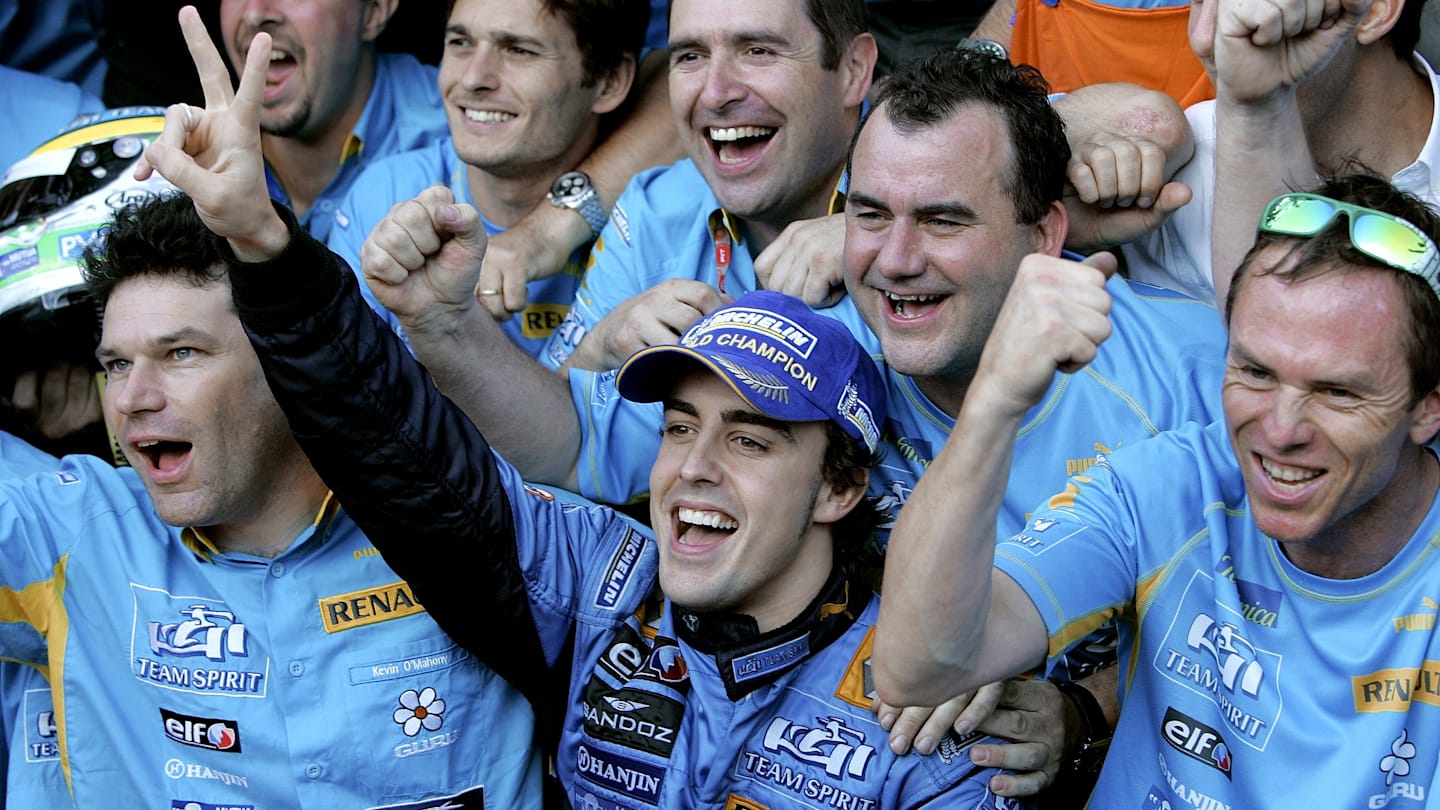
Alonso became a two-time World Champion with Renault in 2006
Jim Clark
Few drivers in the sport have experienced the dominance that Jim Clark did during his World Championship-winning years. After making his debut with Lotus in 1960, the humble Scot claimed his first victories in 1962 before winning seven out of 10 races in 1963 to clinch his debut title.
Another commanding season from Clark in 1965 brought his second championship. His final victory at the 1968 South African Grand Prix came just months before he was tragically killed in an accident during an F2 race at Hockenheim, leaving the racing world in mourning.
Jack Brabham
As one of the few drivers to have won three World Championships, Jack Brabham has earned his place in the history books. The Australian’s first two titles arrived in 1959 and 1960 with the Cooper team, the latter season proving particularly successful with it bringing a run of five consecutive victories.
What makes Brabham unique, however, is that he is the only driver to win a championship for his own team, having taken the title for his eponymous squad in 1966 four years on from the outfit’s formation.
READ MORE: From Fangio to Hamilton – Who are the oldest world champions in the history of Formula 1?
Gilles Villeneuve
When it comes to naming Ferrari’s most famed drivers, Gilles Villeneuve is definitely on that list. The French-Canadian spent all but one race in his Formula 1 career with the Scuderia following his debut with McLaren in 1977, going on to score six victories as well as becoming a firm favourite with Enzo Ferrari.
Villeneuve was famed for his impressive car control and fearless tenacity, while a team orders dispute with Didier Pironi sparked an infamous feud between the pair. Tragically Villeneuve was killed after suffering a crash in qualifying for the 1982 Belgian Grand Prix.
Gilles Villeneuve: Canadian hero, racing icon
John Surtees
John Surtees famously holds a unique place in motorsport history as the only World Champion on both two and four wheels. The Briton started his racing career on a motorcycle and won seven world championships between 1956 and 1960 on 350cc and 500cc bikes.
His switch to cars came in 1960, with Surtees making his debut for Lotus. While he claimed pole position on his third appearance in Portugal, a debut victory did not arrive until 1963 at the wheel of a Ferrari – which was promptly followed by his sole Drivers’ title in 1964.
Nigel Mansell
During a career filled with dramatic highs and lows, Nigel Mansell proved he could fight amongst the likes of Ayrton Senna and Alain Prost. The Briton made his debut for Lotus in 1980, but had to wait until 1985 for his first victory with Williams.
While further triumphs came with the Grove-based outfit – and during a two-year stint with Ferrari – Mansell finally tasted championship glory on his return to Williams in 1992, a season that witnessed a dominant performance at the wheel of the iconic FW14B. With 31 wins under his belt, Mansell remains one of Formula 1’s most successful drivers.
READ MORE: Mansell backing Hamilton to succeed at Ferrari as he predicts ‘amazing year’ for F1
Kimi Raikkonen
Speaking of memorable personalities, Kimi Raikkonen quickly became known as ‘the Iceman’ after his arrival into F1 as a fresh-faced rookie for Sauber in 2001, the Finn soon becoming notorious for his off-track persona.
But it is his performances on the track that put Raikkonen amongst the greats. Across a career spanning a whopping 349 Grands Prix, the driver from Espoo achieved 21 wins, 18 pole positions and 103 podiums as well as winning a memorable World Championship fight against Lewis Hamilton and Fernando Alonso in 2007.
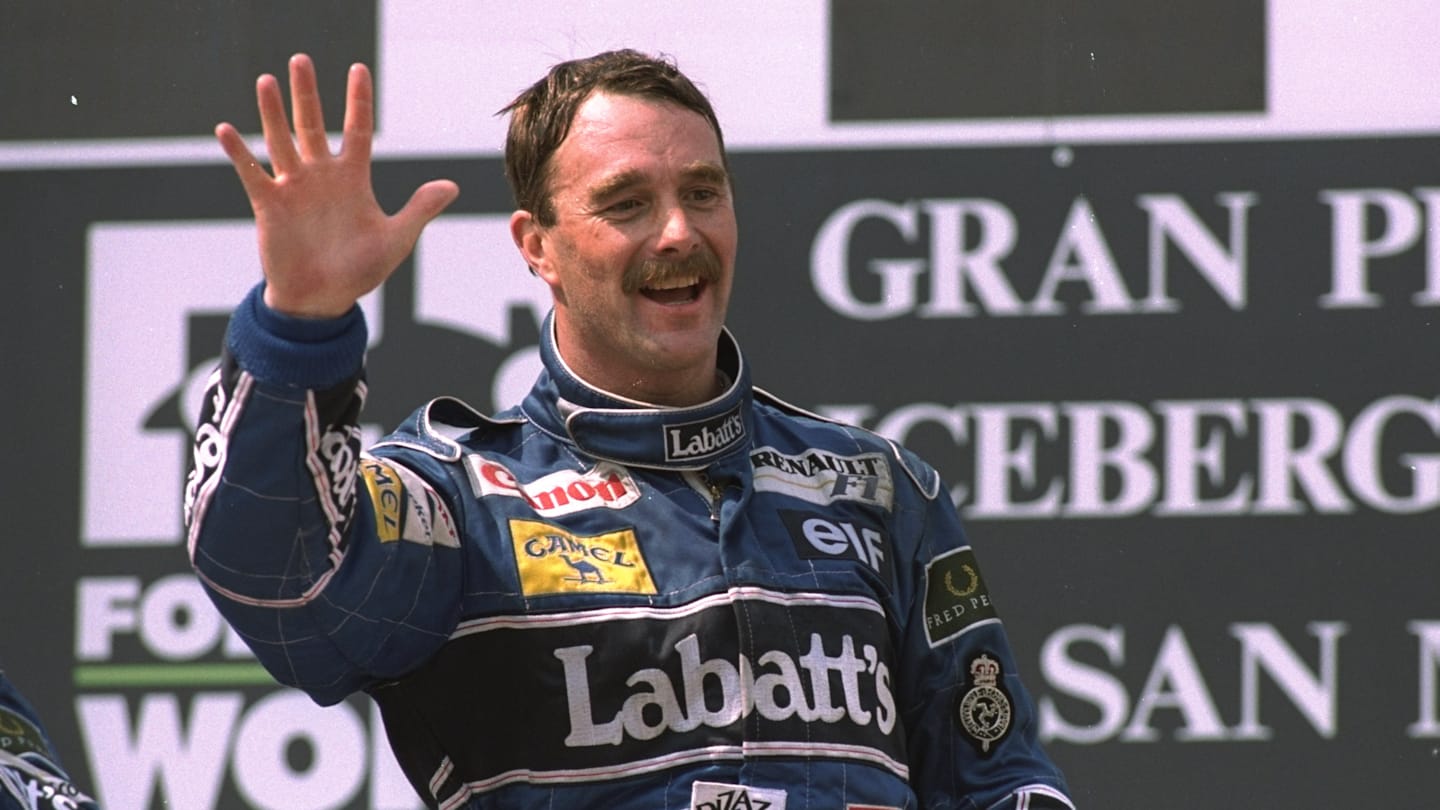
Mansell became a World Champion in 1992 during a dominant campaign with Williams
Stirling Moss
Often heralded as the best driver never to become a World Champion, Stirling Moss battled against legends including Juan Manuel Fangio during his F1 career. After picking up wins for Mercedes and Maserati, Moss’ switch to Vanwall saw him narrowly miss out on the title in 1958.
Further triumphs followed with Cooper and Lotus, bringing his tally up to 16 wins. This gave Moss a record that still stands today for scoring the most victories with different teams (five), as well as the most pole positions with different teams (also five) and the same accolade for most podium finishes (six teams).
The best… cars
Red Bull RB19
For the best cars we start with one of the most recent but impressive additions to the history books. Red Bull’s RB19 proved to be one of the most dominant F1 cars of all time, winning a staggering 21 out of 22 races in the 2023 campaign.
It built on the strong origins of 2022’s RB18 machine, which also helped to bring both championships to the Milton Keynes-based outfit for the first time since 2013.
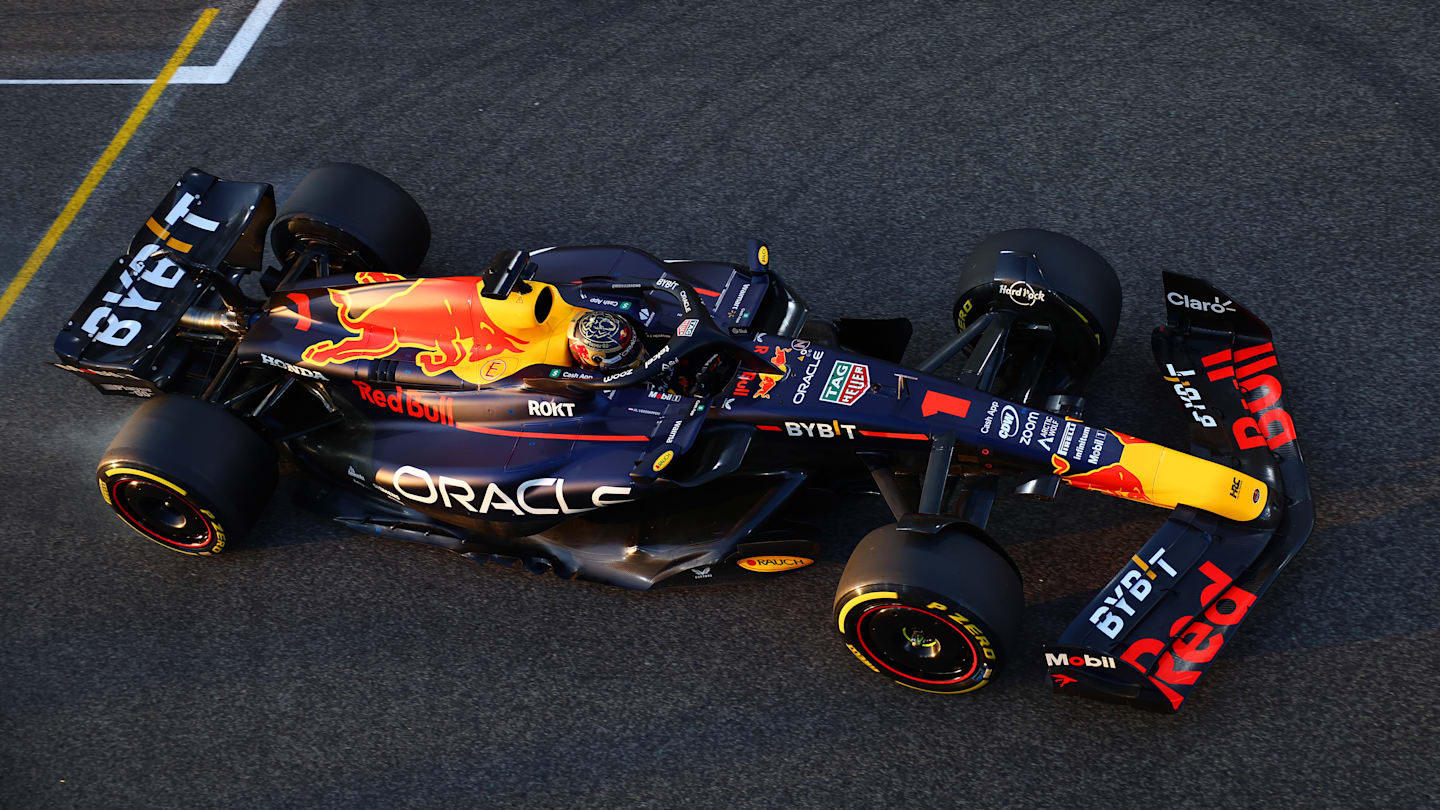
The Red Bull RB19 enjoyed unprecedented levels of success in 2023
McLaren MP4/4
Speaking of dominant cars, the one that set the benchmark back in the 1980s was of course the McLaren MP4/4. Powered by Honda, the challenger displayed remarkable speed at the hands of the team’s all-star driver line-up, Alain Prost and Ayrton Senna.
The MP4/4 won all but one race during the 1988 season, meaning that the battle for the title played out purely between Prost and Senna. It marked the start of the pair’s increasingly bitter rivalry, with Senna ultimately taking his first World Championship.
Ferrari F2002
The success experienced by Ferrari and Michael Schumacher spanned several years across the early 2000s, but perhaps the greatest car created by the team during that era was the F2002.
This was a challenger that brought Schumacher his third consecutive World Championship with the Scuderia – and fifth overall – by only the 11th round of the season with six races to spare. A win this early in the campaign was not equalled until Verstappen’s triumph in 2023, also with six Grands Prix still to go.
READ MORE: 6 times the best F1 drivers and best cars combined to produce relentless brilliance
Williams FW14B
In terms of the most innovative cars in the sport’s history, the Williams FW14B is definitely one of the most iconic. A technical team spearheaded by Patrick Head and Adrian Newey led to the creation of a challenger that harnessed groundbreaking technology – such as active suspension – to its great advantage.
Nigel Mansell drove the FW14B to what would be his sole Drivers’ Championship in 1992, while the car’s success also helped to deliver Williams’ first Constructors’ crown since 1987.
F1 ICONS: McLaren MP4/4
Mercedes W07
After acing the introduction of the turbo-hybrid era in 2014, Mercedes went from strength to strength – and one of their greatest moments followed in 2016 via the creation of the W07, described by a member of the team as “racing car nirvana”.
In a season that saw drivers Lewis Hamilton and Nico Rosberg claim all but two wins between them, the W07 eked out even more performance from that experienced by its predecessor to help the Silver Arrows clinch their third consecutive Drivers’ and Constructors’ Championships.
Lotus 72
These days, F1 teams present a new challenger for each season – but remarkably the Lotus 72 experienced success across six years in the sport, notching up two Drivers’ Championships, three Teams’ titles and 20 Grand Prix victories during its tenure between 1970 and 1975.
The car’s innovative design – created by Colin Chapman – featured a more aerodynamic profile, while it also became the first to sport the famous black and gold livery that would become synonymous with Lotus.
PODCAST: Former Lotus boss Peter Collins on working with Chapman, Hakkinen and Mansell
Alfa Romeo 158/9 Alfetta
Another car that enjoyed a lengthy period of success was the Alfa Romeo 158, a vehicle originally built in 1937 that won all bar one race during Formula 1’s very first championship season in 1950. With Giuseppe ‘Nino’ Farina and Juan Manuel Fangio at the wheel, the team were seemingly unstoppable as Farina sealed the first ever Drivers’ title.
Further triumphs followed in 1951 via the car’s successor, the Alfa Romeo 159, and this time it was Fangio who clinched the first of his five championships. Alfa Romeo subsequently opted to withdraw from the sport at the end of the season, not to return until 1979.
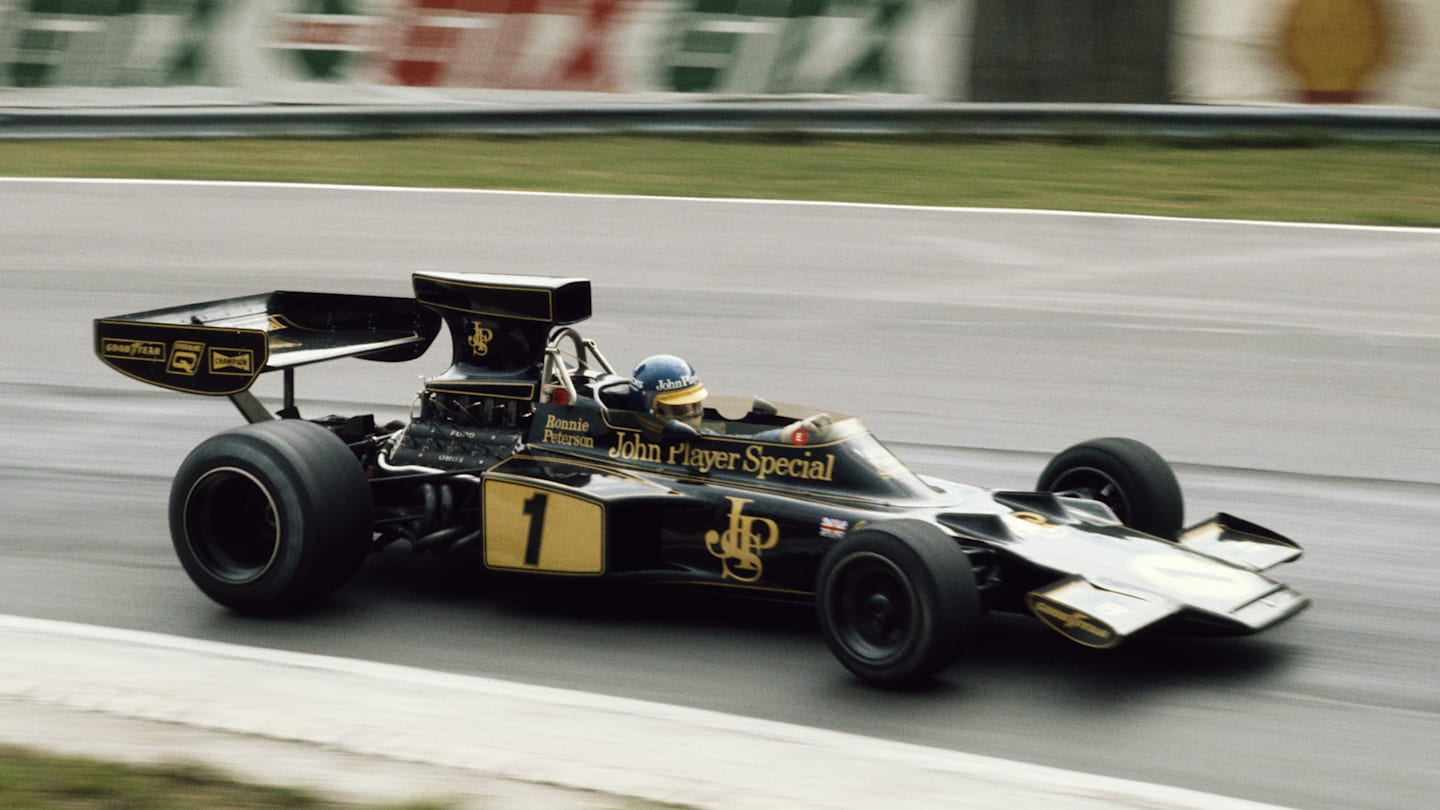
The Lotus 72 sported the black and gold livery that would become synonymous with the team
Benetton B195
Michael Schumacher’s first World Championship in 1994 had arrived in slightly controversial style following a collision at the season finale with rival Damon Hill. His second championship in 1995, however, was won in a more straightforward fashion as Schumacher proved to be a force to be reckoned with alongside his challenger, the Benetton B195.
While the car was not necessarily lauded as the easiest to drive when the season got underway, developments during the campaign seemed to help the squad move themselves ahead of Williams and seal their one and only Teams’ Championship.
McLaren MP4/2
Another success story for McLaren came courtesy of the MP4/2, the team’s challenger for the 1984 season. Designed by John Barnard, the car won on its debut with Alain Prost at the wheel and from thereon proved frequently unbeatable.
Paired with the strong line-up of Prost and then two-time World Champion Niki Lauda, the MP4/2 won an impressive 12 out of 16 races throughout the season and helped Lauda to secure his third and final Drivers’ Championship.
READ MORE: How Niki Lauda's final title-winning car, the 1984 McLaren MP4/2, changed F1
Ferrari F2004
The 2004 season marked the final year of a spectacular run for Ferrari and Michael Schumacher, and the F2004 proved a fitting car for this milestone as it helped to deliver both the Teams’ and Drivers’ Championships for a fifth consecutive campaign.
With Schumacher taking victory in a whopping 13 out of 18 races during the season, the F2004 has become one of the German’s most famed cars, with son Mick Schumacher driving it at Mugello in 2020 during Ferrari’s 1000th race celebrations.
MUST SEE: Mick Schumacher drives father Michael's Ferrari F2004 at Mugello
Red Bull RB9
Sebastian Vettel once stated that he would like to purchase the F2004 for his personal collection – but the four-time World Champion had no shortage of successful cars during his own F1 career, perhaps none more so than the Red Bull RB9.
After battling until the end for his third Drivers’ title in 2012, Vettel enjoyed a much smoother run to his fourth in 2013 at the wheel of the RB9, one of the most dominant of Adrian Newey’s Red Bull designs that swept to 13 race wins including a staggering run of nine consecutive victories in the latter half of the campaign.
Brawn BGP 001
Who could forget the tale of Brawn GP, the team that enjoyed a fairytale rise from the ashes of the former Honda outfit to enjoy unexpected success in 2009. Following a promising performance in pre-season testing, the squad delivered in the campaign to win six of the first seven races.
The BGP 001’s innovative ‘double diffuser’ design – paired with a Mercedes engine and a solid driver line-up in Jenson Button and Rubens Barrichello – saw the team memorably clinch both championships in what would be their sole season as Brawn GP before being bought out by Mercedes for 2010.
Mercedes W11
Speaking of Mercedes, the team have countless successful cars to choose from across their dominant era in the 2010s – but the W11 that earned Lewis Hamilton his last Drivers’ Championship to date in 2020 was a particular force to be reckoned with.
During a shortened season owing to the COVID-19 pandemic, Hamilton stormed to his seventh title at the wheel of a Mercedes that carried a striking new black livery. Indeed, the Briton hailed it as the “best car” that the squad had made at that time.
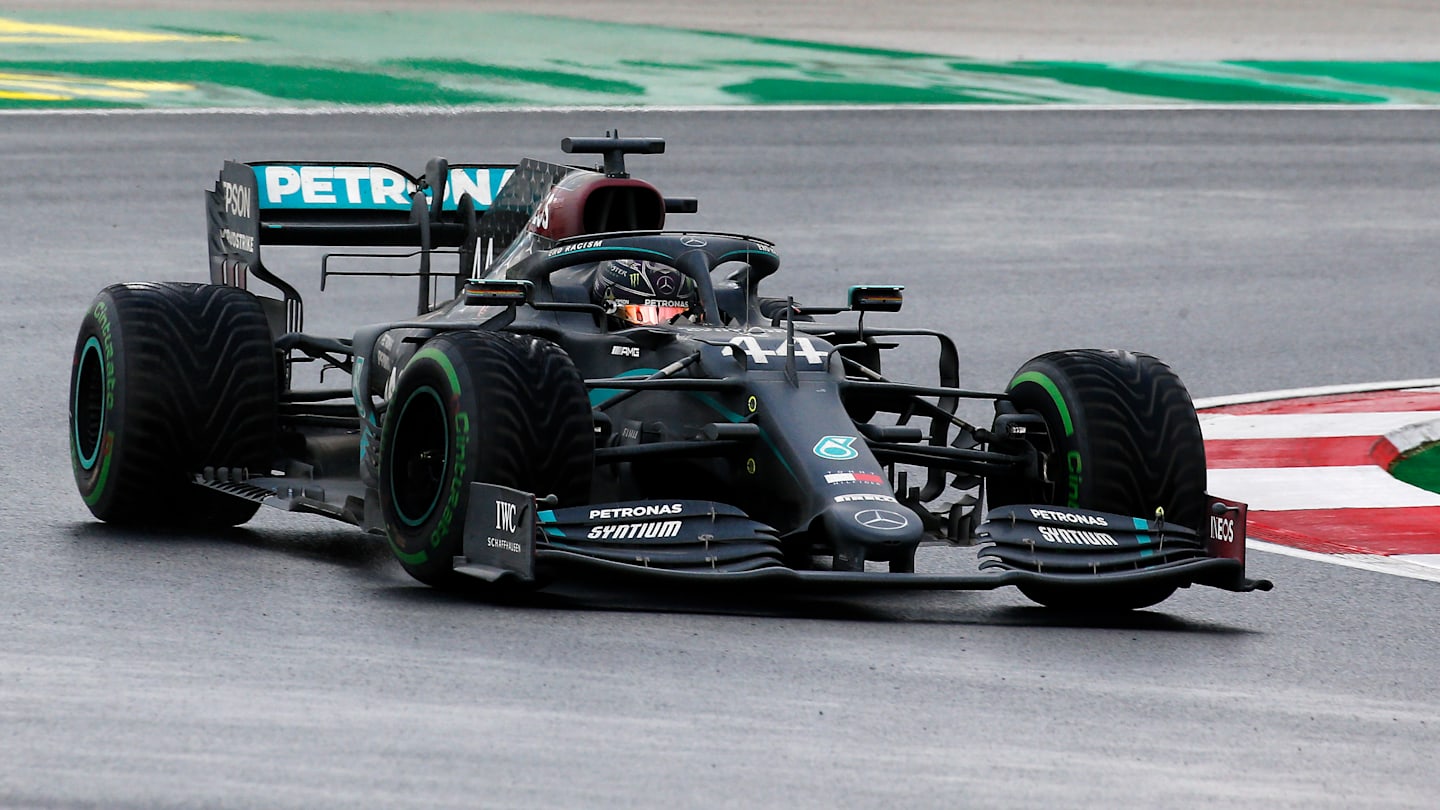
Hamilton stormed to his seventh World Championship at the wheel of the Mercedes W11
Ferrari 500
After Alfa Romeo had triumphed during the first two years of the World Championship, Ferrari took their debut title in 1952 courtesy of Alberto Ascari at the wheel of the Ferrari 500.
The car won its inaugural race – the Swiss Grand Prix – driven by Piero Tarufi before Ascari embarked on a dominant run of six consecutive victories to seal the championship. This form continued for the 500 in 1953, with Ascari again going on to claim the title.
Lotus 49
In the debate over the most influential F1 car ever, the Lotus 49 is often touted as a strong candidate, with its innovative design credited as leading the way for much that followed in terms of chassis design in Formula 1.
Created by Colin Chapman for the 1968 season, the Lotus 49 won on its debut at the South African Grand Prix with Jim Clark. After Clark’s tragic death during an F2 race at Hockenheim, Graham Hill led the team’s charge and claimed his second World Championship, while the car went on to win further races in 1969 and 1970.
WATCH: Tech Talk Retro – How some of the most iconic cars in F1 history changed the sport
The best… innovations
Ground effect
The aerodynamic phenomenon of ground effect made its return to Formula 1 when the current generation of cars were introduced in 2022 – albeit in a slightly different form to its previous era of prominence in the 1970s.
Ground effect essentially helps the car to grip to the track via its underfloor downforce and, while full ground effect cars were banned at the end of 1982, the phenomenon’s return in the current era was aimed at increasing how closely cars can follow one another, thus allowing for more racing.
Double diffuser
Formula 1 has seen many game-changing technical innovations that have helped to bolster a car’s performance – and perhaps one of the most famous is the double diffuser, a loophole-based invention that featured on Brawn GP’s championship-winning car in 2009.
While its legality was questioned by rivals, the double diffuser – which helped to deliver an extra boost of downforce – was found to be legal. Its impact has been played down by some from the Brawn squad in the years since the team’s fairytale success, but it remains as one of the sport’s greatest innovations.
F1 TV Tech Talk: Sam Collins explains the origins of ground effect
Six-wheeled car
When it comes to the most visually memorable innovations in Formula 1, it is hard to beat the Tyrrell P34, the famous six-wheeled car that was developed after the team exploited a loophole in the regulations during the 1976 season.
The P34 showed promise upon its debut at the 1976 Spanish Grand Prix – but more was to come when, on only its fourth outing, the car was driven to pole position by Jody Scheckter in Sweden before going on to win the race. While the challenger was abandoned at the end of 1977, its place in F1 folklore remains.
Active suspension
After first making its appearance in F1 during the 1980s, the use of active suspension reached its peak in the early 1990s. The innovation allowed the ride height on the car to be automatically adjusted at each corner, giving more aerodynamic stability.
Active suspension was banned from the sport in 1994 – along with other ‘driver aids’ including traction control – given the costs involved in developing such a complex piece of technology.
WATCH: Boldest Innovations – The inside story on some of F1’s most remarkable feats of engineering
Semi-automatic gearbox
It was former Ferrari designer John Barnard who brought the semi-automatic gearbox to Formula 1 in 1989, with the aim being to reduce the strain on the gearbox – a component that had been suffering from increasing unreliability – whilst also allowing the driver to maintain focus by keeping their hands on the wheel.
The invention looked to have quickly paid off for the Scuderia when Nigel Mansell took victory in the Ferrari 640 at the season-opening Brazilian Grand Prix. While that challenger went on to suffer some issues during the campaign, the semi-automatic gearbox became a mainstay with every F1 team by the mid-1990s.

Tyrrell's six-wheeled P34 car has earned its place in F1 folklore
Turbochargers
The turbocharger – an air compressor that takes waste energy from the exhaust and uses it to power the engine system by circulating air through the cylinder – did not make its debut in F1 until the 1977 British Grand Prix as part of the Renault RS01.
While the car initially suffered problems, Renault persisted with the turbocharger and, as the technology was refined, performance improved. The turbocharger is now a key feature of the hybrid power unit in modern-day Formula 1.
Front and rear wings
It may be difficult nowadays to imagine an F1 car without its front and rear wings, but the technology was new to the sport when it debuted on the Lotus 49B at the 1968 Monaco Grand Prix, leading other teams to quickly follow.
The wings – which help in delivering downforce to the car – have since seen some fascinating developments over the years, with teams experimenting to find new ways of maximising their aerodynamic benefits.
READ MORE: Anatomy of a pit stop: How do F1 teams service their cars in less than two seconds?
Carbon fibre chassis
The McLaren MP4/1 – introduced in 1981 – is famed for being the first F1 car to have a carbon fibre chassis. This was developed with Hercules Aerospace, an American company that had created rocket parts for NASA.
There were doubts from some over how the carbon fibre chassis would hold up in the event of a crash, but those concerns were alleviated when John Watson walked away unharmed from a spin out of the Italian Grand Prix, the new monocoque proving stronger than its aluminium predecessor. The car also went on to win races, leading the rest of the field to soon adopt the carbon fibre chassis themselves.

The McLaren MP4/1 was created with a carbon fibre chassis, leading to the rest of the field soon following suit
Fan car
Like the Tyrrell P34, the Brabham BT46B is perhaps one of F1’s most aesthetically unforgettable developments, as well as being another instance where one team exploited a loophole in the regulations to incredibly inventive effect.
The so-called ‘fan car’ – which, as the name suggests, sported a large fan on the rear to create downforce – raced just once at the 1978 Swedish Grand Prix, where it was driven to victory by Niki Lauda. And while its time in the sport was fleeting, it holds a place in the history books as one of the sport’s boldest inventions.
Key safety innovations
Formula 1 has developed several pioneering safety innovations over the years and, in terms of the greatest, the halo is certainly high on the list. Introduced in 2018, the halo is a curved titanium bar that sits over the driver’s head in the cockpit in order to protect them from any potential impact.
The halo is designed to take the weight of a London double-decker bus and has proven its effectiveness on more than one occasion, having been credited as helping to save the lives of drivers in accidents including Romain Grosjean’s fiery Bahrain 2020 crash, which saw his Haas pierce a barrier and split into two.
Other crucial safety developments have included the HANS device, a head and neck restraint that has been mandatory since 2003, and fire-resistant race suits, another item that doubtless helped to protect Grosjean in his Bahrain incident.
How the Halo works: Albert Fabrega's F1 TV Tech Talk demo | Crypto.com
The best… teams
Ferrari
A name that needs little introduction, Ferrari are the most statistically successful and experienced team in Formula 1 history – as well as carrying perhaps the greatest romanticism and legacy that still makes them a dream destination for many drivers today.
Since debuting in the sport’s first-ever championship season in 1950, the Scuderia have started a whopping 1098 Grands Prix and along the way have claimed 15 Drivers’ titles, 16 Teams’ Championships, 248 victories and 253 pole positions.
McLaren
McLaren are another of F1’s most historic teams. Founded in 1963 by Bruce McLaren, the team have continued on the legacy left by the New Zealander following his tragic death in a testing crash at Goodwood in 1970.
Across 970 starts, McLaren have collected 12 Drivers’ Championships, a list that features star names including Alain Prost, Ayrton Senna and Lewis Hamilton. Having also scored nine Constructors’ titles, 189 wins and 164 pole positions, the Woking-based outfit are looking to build on this further off the back of their 2024 success.
Williams
With seven World Championships and nine Teams’ titles to their name – as well as 114 wins and 128 pole positions – Williams have enjoyed their fair share of success since their first entry back in 1978.
The squad – founded by the late Frank Williams – have also endured plenty of highs and lows, with their competitiveness in more recent years falling away in comparison to those past glory days. But the team remain a determined and popular presence on the grid as they try to find their way back to the top again.
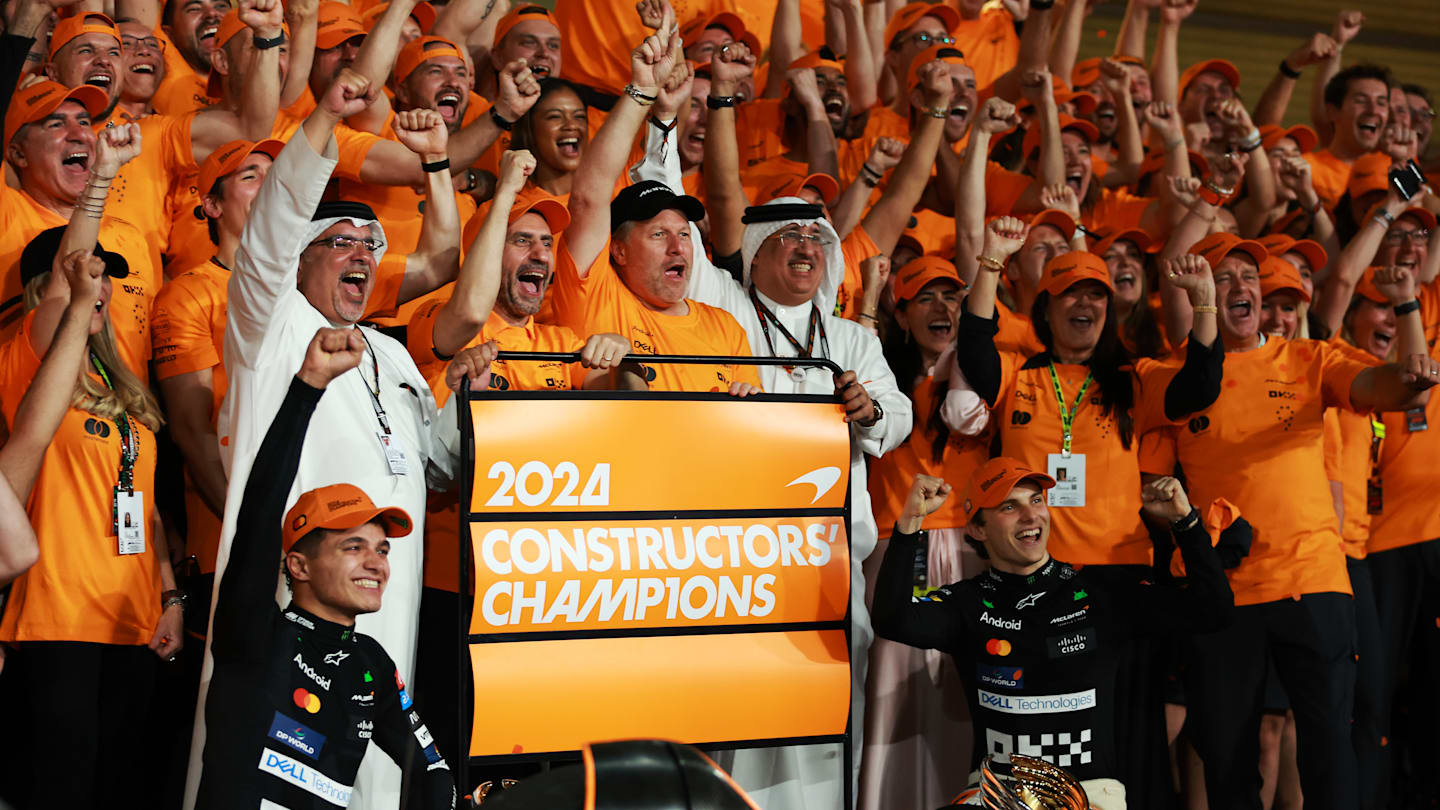
McLaren won a long-awaited ninth Teams' Championship in 2024
Red Bull
They may not have the same illustrious history as some of the previous entries on this list, but Red Bull have cemented their place in the F1 record books in a relatively short space of time since their formation back in 2005.
Sebastian Vettel and Max Verstappen have delivered a total of eight Drivers’ titles to the team, while the squad have also earned the Constructors’ crown on six occasions as well as 122 wins and 103 pole positions.
Mercedes
When it comes to success stories in Formula 1, Mercedes’ run of form following the introduction of the turbo-hybrid era in 2014 is one of the greatest. Having made their return to the sport in 2010 – after last competing as a team back in 1955 – the Silver Arrows embarked on a record-breaking feat that saw them win eight consecutive Teams’ Championships between 2014 and 2021.
Lewis Hamilton stormed to six Drivers’ titles during that time, while the squad hold the third-highest number of wins and pole positions in history on their tallies of 129 and 141 respectively.
Lotus
The Lotus name may no longer be present in F1 but it certainly remains as one of the most iconic. Famed for the innovative designs created by founder and designer Colin Chapman, Lotus enjoyed huge success in the 1970s and 1980s, an era in which they claimed 71 of their 81 victories.
Drivers including Jim Clark and Graham Hill contributed to the team’s six World Championships and seven Constructors’ titles. After disbanding following the 1994 season, the Lotus name returned between 2010 and 2015, a period in which they took two race wins courtesy of Kimi Raikkonen.

Hamilton and Mercedes formed the most successful driver/team pairing in the sport's history
Cooper
While Cooper may not be quite as famed as some of the previous teams mentioned here, the British outfit were influential in the design of Formula 1 cars during the 1950s.
The small team were the first to place the engine behind the driver, an innovation that helped to create more downforce – and ultimately brought Cooper success, with the squad winning championships courtesy of Jack Brabham in 1959 and 1960.
Brabham
Speaking of Jack Brabham, the Australian driver founded his eponymous team in 1962 off the back of his title triumphs with Cooper. While success was not immediate, the squad’s first win came in 1964 – and this was followed by a debut World Championship in 1966 with Brabham himself at the wheel.
As previously mentioned in this list, the achievement is unique for being the only occasion where a driver won a title for their own team. The Brabham outfit scored two Teams’ titles as well as amassing a total of four Drivers’ Championships and 35 wins across their 30 years in F1.
F1 ICONS: David Brabham on his father Jack, the legendary three-time world champion
Renault
A well-known name in the sport, Renault enjoyed three stints as a works outfit in Formula 1 between 1977 and 2020. After Jean-Pierre Jabouille took their first win in 1979, further victories followed for the likes of Alain Prost and Rene Arnoux in the 1980s – but no championships.
That all changed during their second era in the sport, during which Fernando Alonso clinched back-to-back titles for the squad in 2005 and 2006. Alonso is responsible for 17 of Renault’s 35 wins as a constructor, while their most recent stint in F1 came to a close in 2020 when the team rebranded as Alpine from 2021 onwards.
ONBOARD: Fernando Alonso drives 2005 championship-winning Renault R25
Tyrrell
Making their debut in 1970 with World Champion Jackie Stewart onboard, it did not take long for the Tyrrell team – founded by former racer Ken Tyrrell – to enjoy success. The partnership sealed the Drivers’ and Teams’ titles in 1971, with Stewart and team mate Francois Cevert scoring seven wins between them.
Stewart took another World Championship with the team in 1973 before retiring at the end of the season, and while Tyrrell struggled to replicate that form during the 1980s and 1990s, the squad hold a place in history after achieving 23 wins and 14 pole positions during their time in the sport.
Benetton
After appearing as a sponsor in the early 1980s, Benetton – previously better known as a clothing company – entered Formula 1 as a team in 1986 following their purchase of the former Toleman squad.
The outfit’s first victory arrived in only their first season – with Gerhard Berger winning the 1986 Mexican Grand Prix – yet it was not until 1994 that they took a World Championship courtesy of Michael Schumacher, a feat repeated in 1995 with the addition of the Teams’ title. Benetton eventually became the Renault team in 2002, but their success with Schumacher ensures that they remain in the F1 history books.
BRM
Founded in the Lincolnshire market town of Bourne, British Racing Motors – known as BRM – suitably made their debut in Formula 1 on home turf at the 1951 British Grand Prix. The outfit went on to enjoy success in the 1960s and early 1970s, collecting a total of 17 wins.
It was with BRM that Graham Hill won his debut Drivers’ title in 1962, while the squad also earned the Teams’ Championship in that year. Hill was one of several star names to race for the team, with others including Jackie Stewart, Niki Lauda and John Surtees – an impressive legacy for the small team from humble beginnings.
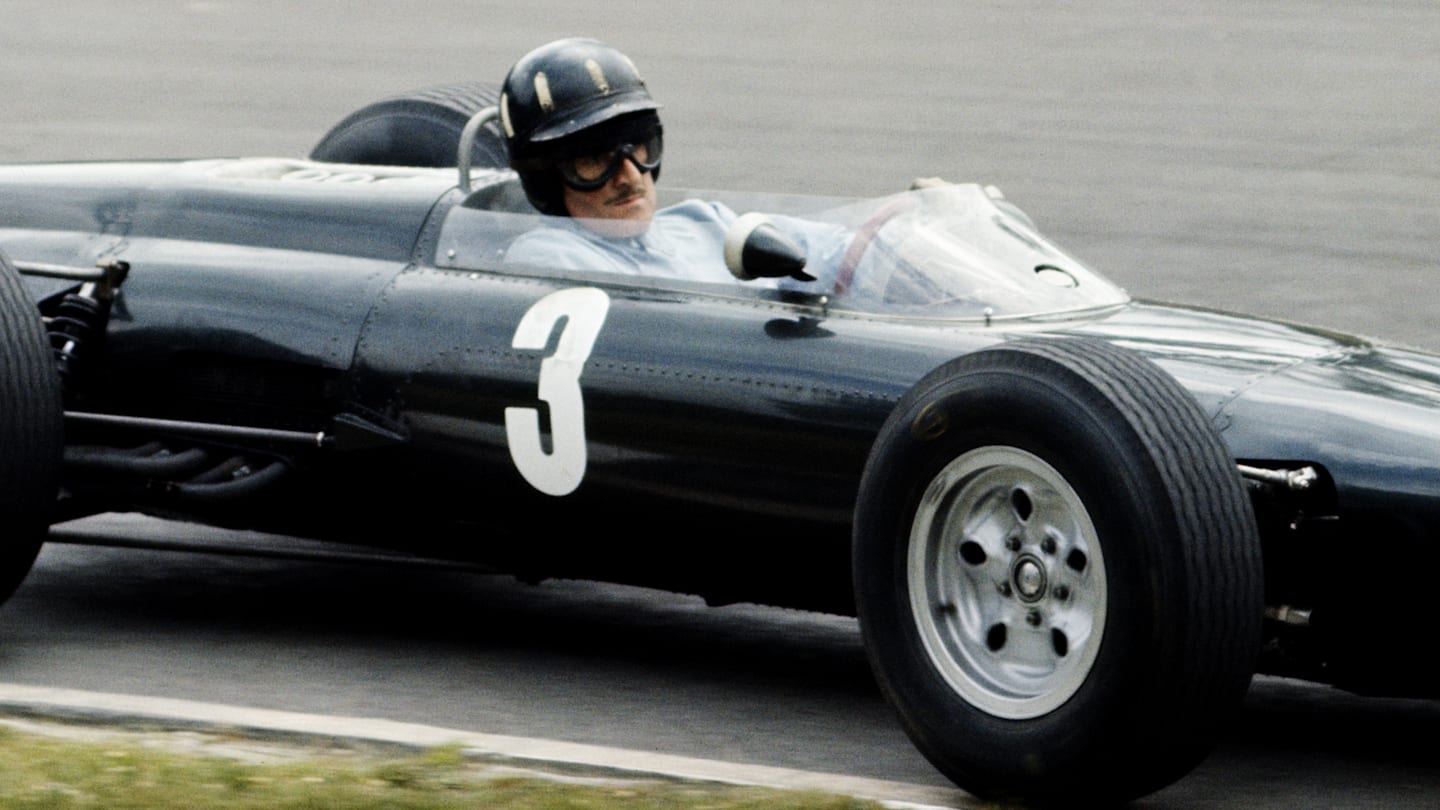
Hill raced for BRM across seven seasons, which included his first championship triumph in 1962
Maserati
Maserati were on the grid for the first-ever Formula 1 championship race at Silverstone in 1950 and from there experienced success across a 10-year stint in the sport.
The team claimed nine wins courtesy of Juan Manuel Fangio and Stirling Moss, while Fangio took two of his World Championships at the wheel of a Maserati in 1954 and 1957, the latter being the final of his five titles.
Brawn GP
The Brawn GP team might have only been active in F1 for one season, but what a season it was. At the end of 2008, the squad that had previously been Honda faced an uncertain future when the manufacturer opted to withdraw from Formula 1.
Team Principal Ross Brawn stepped in by purchasing the team for one pound – and the rest is history, with Jenson Button storming to the Drivers’ title in 2009 while Brawn GP secured the Teams’ crown in one of the sport’s greatest fairytale stories.
Jordan
After starting out in junior formulae, the Jordan outfit – founded by Eddie Jordan – made their debut in Formula 1 at the 1991 United States Grand Prix. And while they never took a World Championship during their 15 seasons in the sport, the underdog squad enjoyed some iconic moments.
Whether it was bringing a rookie by the name of Michael Schumacher to the grid or scoring a memorable debut win with Damon Hill during a chaotic race at Spa-Francorchamps in 1998, Jordan’s time in F1 was certainly memorable.
F1 VAULT: Barrichello leads fairy tale Brawn 1-2 at Monza
The key figures
Enzo Ferrari
With Ferrari being perhaps the most legendary team in Formula 1 history, it is no surprise that their founder, Enzo Ferrari, ranks amongst the key figures of the sport’s 75 years. Decades on from the squad’s first appearance, the Scuderia still carry a legacy that their namesake created.
Enzo Ferrari was famously said to have stated: “Ask a child to draw a car, and certainly he will draw it red.” This sums up the lasting impact that the Italian had on F1 in the creation of his team, an outfit that has proved irresistible as a destination for some of the greats, both during Enzo’s lifetime and in the years since his passing in 1988.
Professor Sid Watkins
When it comes to the development of safety standards in Formula 1, Professor Sid Watkins was undoubtedly a highly influential figure. A world-renowned neurosurgeon, Watkins was recruited by Bernie Ecclestone as the first F1 doctor in 1978 at a time in which serious accidents and fatalities were happening regularly.
During the years that followed, Watkins helped to introduce vital interventions including hospital-grade medical centres at tracks, the Medical Car and its team, and access to helicopters. A charismatic figure, the man often referred to as ‘Prof’ remained as the sport’s medical delegate through to 2004. Watkins passed away in 2012, but his legacy can be seen in the continued safety measures introduced into the sport since.
TIMELINE: The 50-year history of the Safety Car's evolution in Formula 1
Ron Dennis
There were certainly some controversies during Ron Dennis’ tenure at the helm of McLaren, but the Briton remains a central figure in the team’s history. After joining the squad in 1980, Dennis helped to build the outfit into championship winners, with a memorable period late in that decade seeing them clinch four consecutive Drivers’ and Teams’ titles.
Seventeen of McLaren’s 21 championships were won under Dennis’ reign, while numerous legendary drivers raced for the team during his period in charge including Alain Prost, Ayrton Senna, Mika Hakkinen and Lewis Hamilton.
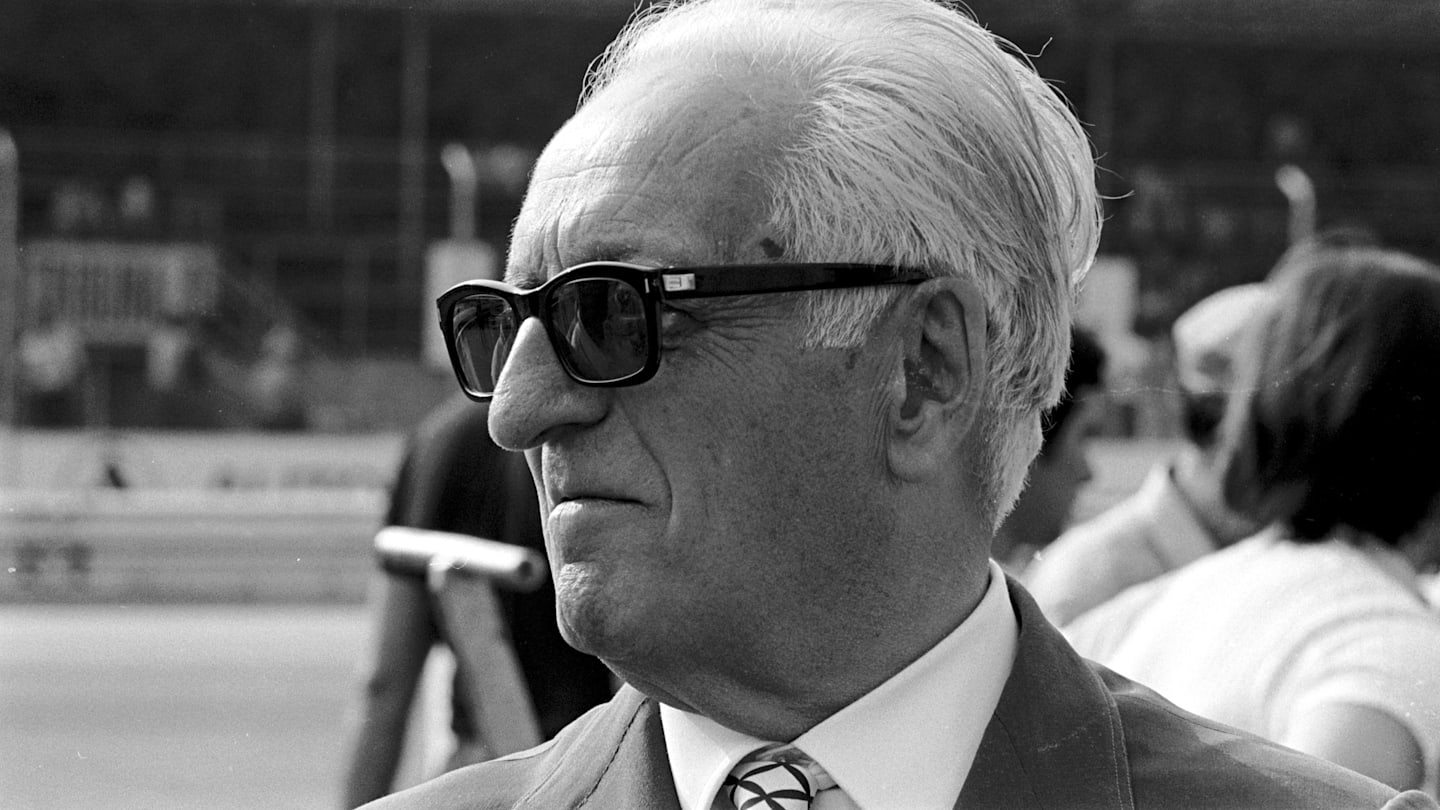
The legacy of Enzo Ferrari lives on in the team that bears his name
Adrian Newey
Another of Dennis’ high-profile recruits was Adrian Newey, one of the sport’s most lauded designers. After creating championship-winning cars for Williams in the early 1990s, Newey went on to do the same at McLaren later in the decade.
The Briton subsequently joined Red Bull in 2006, where he again was responsible for the challengers that helped Sebastian Vettel and Max Verstappen to secure multiple titles. Such is Newey’s reputation that news of his exit from the squad in 2024 led to fevered speculation about his next move, with the acclaimed designer ultimately embarking on a new chapter with Aston Martin.
Stefano Domenicali
Stefano Domenicali has enjoyed an illustrious career in the motoring industry, with the Italian holding several positions at Ferrari before becoming the squad’s Team Principal in 2008, a year in which the Scuderia clinched their last Teams’ Championship to date.
Domenicali went on to hold roles at Audi and Lamborghini before becoming President and Chief Executive Officer at Formula 1 in January 2021, leading the sport into an exciting new era.
Gordon Murray
Remember the McLaren MP4/4 mentioned in the cars section of this list? And the Brabham BT46B ‘fan car’ highlighted as a great innovation? Both of these were created by Gordon Murray, one of Formula 1’s most revered and successful designers.
After joining Brabham in 1969, Murray was responsible for a string of successful challengers including those that brought Nelson Piquet the World Championship in 1981 and 1983. Murray’s success continued when he worked with McLaren between 1987 and 1991, sealing his reputation as one of the sport’s most innovative thinkers.
TECH TALK – The evolution of Adrian Newey's F1 cars
Frank Williams
After launching his squad into Formula 1 in 1978, Frank Williams’ passion and determination saw them become one of the most successful teams in the sport’s history, achieving a total of seven World Championships, nine Teams’ titles and 114 wins in the decades since.
Williams suffered life-altering injuries from a car crash in 1986, but the Briton had lost none of his desire to see the team succeed when he returned to work. And while the outfit was sold to Dorilton Capital in 2020, the legacy created by their founder – who passed away in November 2021 – very much lives on.
Colin Chapman
Lotus founder Colin Chapman brought multiple talents to his role, the Briton being not only a groundbreaking designer and engineer but also a team leader able to recruit some of the sport’s most talented drivers.
Following the team’s debut in 1958, Lotus sealed their debut victory with Stirling Moss in 1960 before championships followed during that decade and into the 1970s, with Chapman’s pioneering designs a crucial part of the squad’s success. Chapman passed away in 1982 aged just 54.
WATCH: How Lotus changed Formula 1 forever with their ground effect revolution
Bernie Ecclestone
After stints as a racer, driver manager and then finally team owner of Brabham, Bernie Ecclestone went on to found the Formula One Group in 1987, a position that saw him control the sport’s commercial rights for many years.
Ecclestone negotiated deals including those for television rights that ultimately helped to grow the sport, while he also proved influential in aspects such as safety, having recruited the aforementioned Professor Sid Watkins. In 2017 Ecclestone left his role as CEO after selling the Formula One Group to Liberty Media.
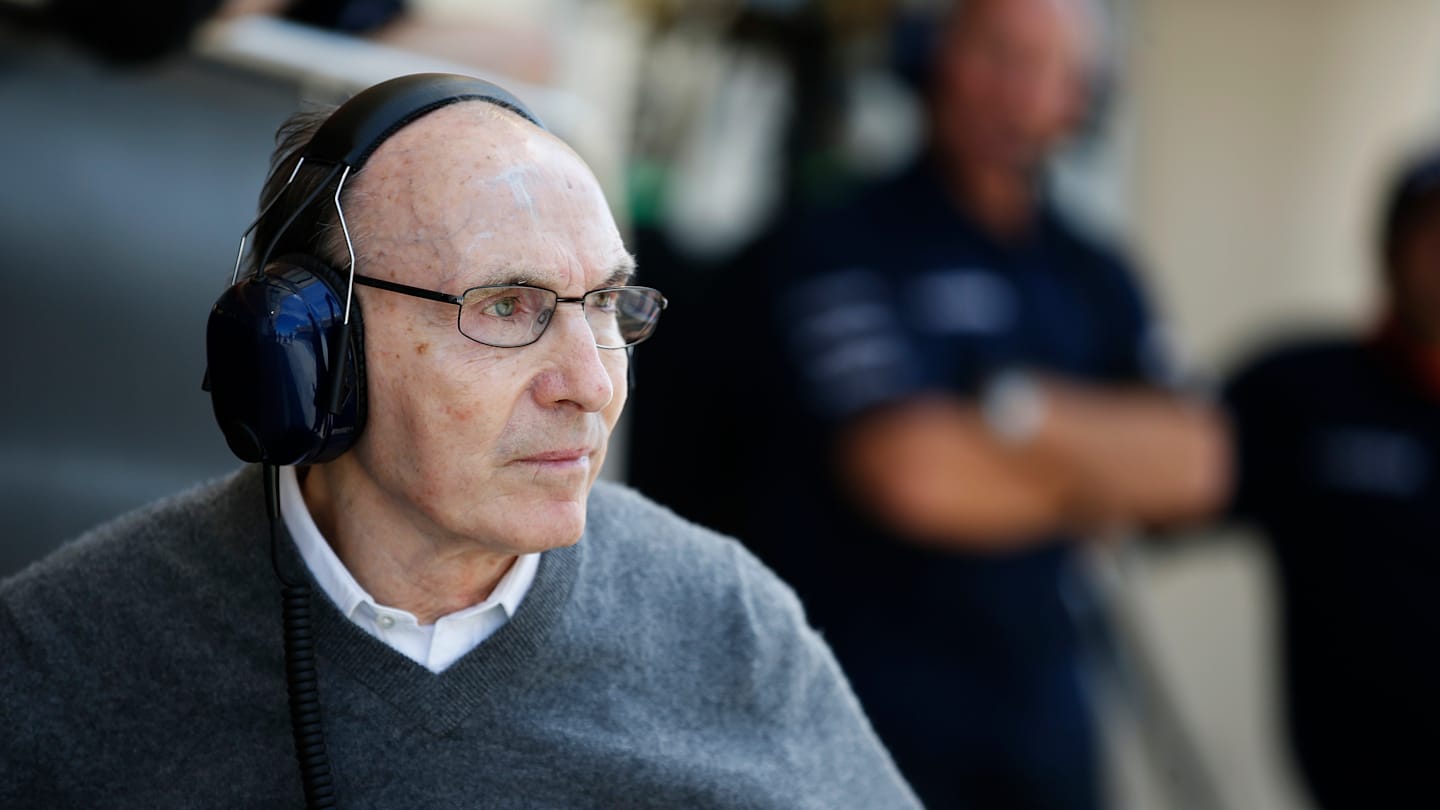
Frank Williams remained passionate about the team that he founded in 1978
Max Mosley
Like Ecclestone, Max Mosley had tried his hand at racing before becoming a team owner, having co-founded the March team that made its debut in 1970.
The Briton went on to become a legal adviser to the Formula One Constructors’ Association in 1977 but is best known for his 16-year term as President of the FIA between 1993 and 2009, a time in which one of his most notable achievements was the introduction of further safety improvements into the sport.
Ross Brawn
Ross Brawn’s legacy in Formula 1 is multifaceted, with the British engineer making a name for himself as Technical Director during Benetton and Ferrari’s championship-winning runs in the 1990s and 2000s respectively.
There was further success to come with his own Brawn GP outfit via their title triumphs in 2009, while Brawn helped to build the foundations of what was to come when Mercedes took over the squad in 2010. In later years Brawn became Managing Director of Motorsports at Formula 1 between 2017 and 2022.
READ MORE: ‘We owe a lot to Ross’ – Team bosses pay tribute to Brawn as he steps back from F1 role
Jean Todt
A key figure alongside Brawn during Ferrari’s remarkable run of success from 2000 to 2005 was Jean Todt, the man who had become the first non-Italian to take over at the Scuderia in 1993. At a time when the squad had been struggling, Todt helped to lead them back to success, having recruited the likes of Brawn, Rory Bryne and Michael Schumacher during the 1990s.
After his tenure with Ferrari came to an end, Todt was elected FIA President in 2009 and remained in the position through to 2021. The Frenchman has also worked to promote safety both in the sport and on public roads.
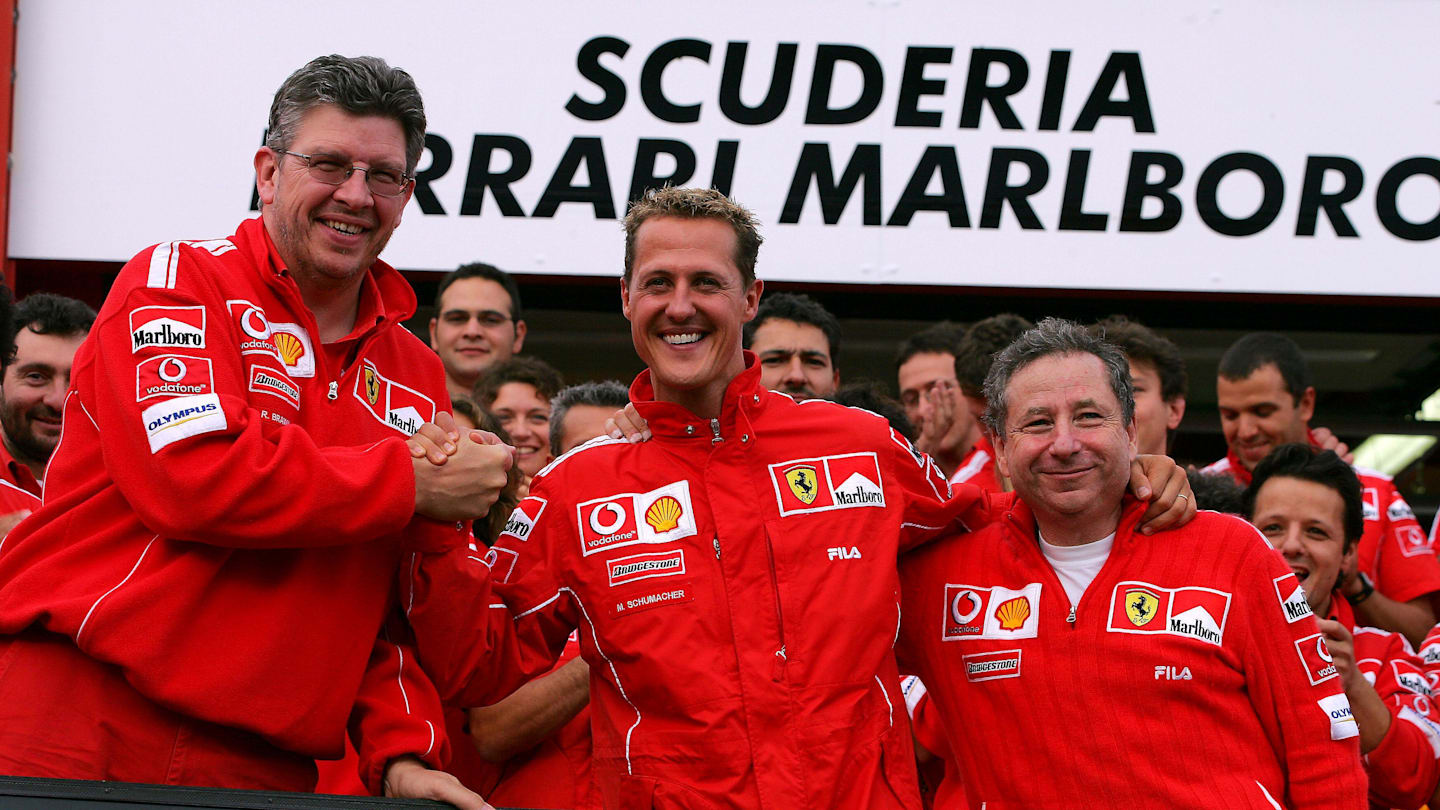
Brawn and Todt were two key figures in Ferrari's success during the early 2000s
Christian Horner
Red Bull arrived into F1 as a team back in 2005 after the company’s co-founder, Dietrich Mateschitz, purchased the former Jaguar outfit. Mateschitz recruited renowned designer Adrian Newey to join the squad, while Christian Horner was appointed as Team Principal.
The youngest person to become a team boss at the time, Horner has since become one of the sport’s longest-serving Team Principals. In his years at the helm, Red Bull have won eight World Championships and six Constructors’ titles as well as scoring 122 wins.
Toto Wolff
Another one of Formula 1’s long-standing team bosses, Toto Wolff has enjoyed huge success since taking the reigns at Mercedes in 2013. After previously embarking on a racing career, Wolff turned his attentions to the world of business and went on to become Executive Director of the Williams team in 2012.
Following his move to the Silver Arrows – where he acts as Team Principal and CEO – Wolff led the team through a stunning run that saw them win a record-breaking eight consecutive Constructors’ Championships between 2014 and 2021 as well as seven back-to-back Drivers’ titles.
Susie Wolff
Susie Wolff has long been making history in motorsport. After joining Williams as a development driver in 2012, Wolff became the first woman to participate in an F1 weekend since 1992 when she took the wheel during first practice at the 2014 British Grand Prix.
After retiring from racing in 2015, Wolff took on the role of Team Principal of the Venturi Racing outfit in Formula E before becoming Managing Director of F1 ACADEMY in 2023. In the time since, the all-female category has continued to grow in its mission to promote opportunities for women and girls in motorsport.
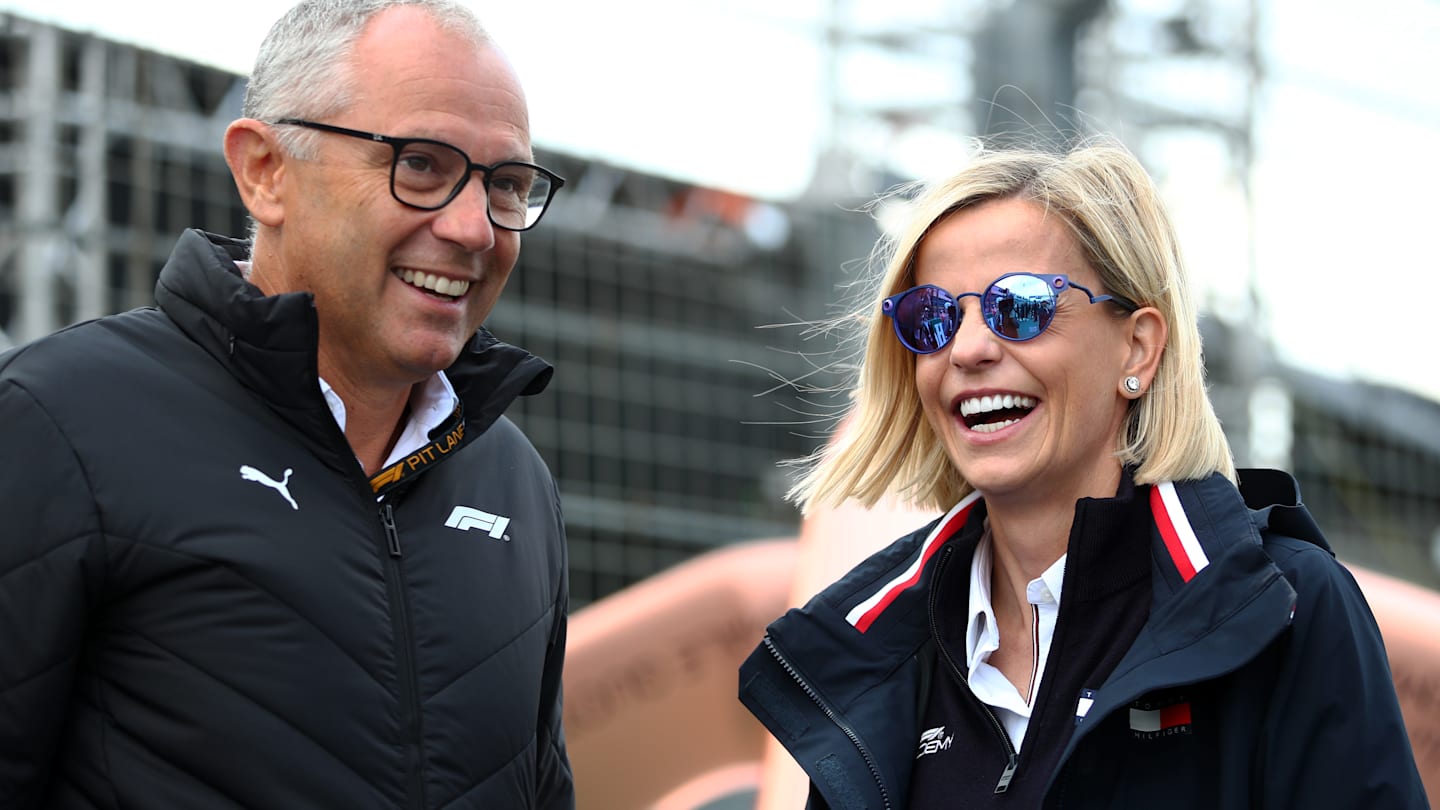
Susie Wolff joined Formula 1 as Managing Director of F1 ACADEMY in 2023
DISCOVER MORE...
IT'S RACE WEEK: 5 storylines we're excited about ahead of the 2025 Chinese Grand Prix
POWER RANKINGS: Who tops our first leaderboard of the season after a wet and wild Australian GP?
TECH WEEKLY: Has McLaren’s secret weapon for the 2025 season been revealed?
Who to watch out for from the 2025 F1 ACADEMY grid as the series returns in China
YOU MIGHT ALSO LIKE
News Brown hails ‘unbelievable’ Norris drive and ‘perfect’ McLaren strategy after season-opening victory in Australia
News Educating fans, reducing waste and celebrating culture – ESG highlights from the Australian GP weekend
News Norris explains how he’s adapted to ‘difficult to drive’ McLaren as he expects ‘more competition’ from rivals in China
News Iconic F1 team owner Eddie Jordan passes away aged 76
